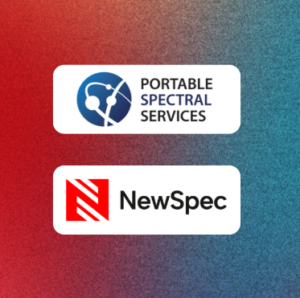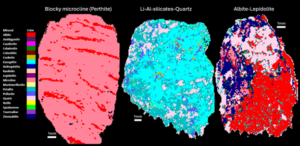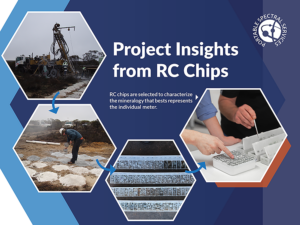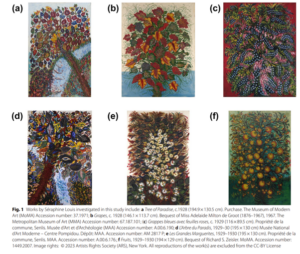
A Bright Future Ahead
Portable Spectral Services Announces Exciting Management Transition
Currently there is a global shortage of semiconductors due to the COVID-19 pandemic crippling the semiconductor manufacturing industry. Chip shortages are expected to run well into 2023, meaning some industries will be opting for repair options over delayed replacement of printed circuit boards (PCBs). PCBs pose two major hurdles when it comes to repair. Firstly, being constructed on an extremely fine scale where spacing of circuits can go down to 100µm and secondly, many components are covered or overlapped. Micro-XRF provides a unique solution to both problems. Micro-XRF provides visualisation at a high-spatial resolution up to 4µm, combined with an in-depth elemental analysis, meaning that covered components can often be mapped through the surface of the board.

Figure 1: Populated PCB used scanned by M4 Tornado

Figure 2: Micro-XRF elemental overlay map
A PCB board (fig. 1) was scanned at a 50 µm resolution using a Bruker M4 TORNADO micro-XRF. A brief scan with a multi elemental image overlay (fig. 2) quickly depicts the components, being easily distinguished via their elemental composition. The main instance of failure is often Au contacts, bond pads, or solder bumps. As seen in figure two, gold contacts are easily detected even underneath the surface of the board. Further more, the spacing between the contacts can also be resolved due to the high resolution of the scan. Each element identified within the mapped space can be separated into its own individual elemental distribution map to further break down and assist with component mapping and checks (Fig. 3).

Figure 3: Micro-XRF individual maps
Table 1 supplies a breakdown of the potential uses of various elements in a PCB. Having the ability to identify most components of a PCB makes the micro-XRF perfect for various applications including; identification of ROHS (hazardous substances), electrical waste products to support efficient recycling, spatial checks between various components, and analysis of continuity/potential breakages between connections.
Table 1: Description of elemental maps
Elemental Map: | Description: |
Au | Fine gold leads are visible inside the microchips, usually around 25µm width per lead. Gold is used for its electrical conductivity and material properties, allowing it to be worked easily at micron scales. Gold leads carry the signal from contact pads that touch the PCB, through the silicon chip to the die. |
Zn | Zinc Oxide is a semiconductive material often used in resistors, varistors (variable resistors), and as a galvanic corrosion protection for corrosion-sensitive components in PCBs. |
Cu | Copper is used for most traces inside the circuit board, and some leads inside microchips where gold does not need to be used. PCBs are usually made of a laminated sheet of copper sandwiched between insulating material, often with multiple layers of copper used for different purposes. |
Ag | Silver is usually found within various types of solder, which are used to connect electrical components and to attach chips to the PCB. Silver solder has higher mechanical strength than normal tin solder, and better resistivity to thermal stress, which is why it’s often used underneath chips to hold them in place. |
Sn | Tin is found in most solder along with Cu, Ni, and Ag. It purpose is to provide a good connection between electrical contacts, and work as a mounting mechanism. |
Pb | Used along with Zn oxides in varistors (variable resistors) and resistors. Older PCBs may be found to have lead containing solder. |
Ba | Barium Sulphate is used as a solder mask additive as it has fire retardant properties. A solder mask is a Silicon-based layer on top of the circuit board to prevent unintentional solder attachment. |
Ni | Nickle has various uses as a solder additive and as an oxidation preventative for copper contacts. It can also be used as a ‘cage’ electromagnetic shielding for some sub-boards or chips. |
Fe | Fe-Ni alloy if often used as shielding to prevent chips from electromagnetically interfering with each other. |
If you are interested in having your own sample analysed by micro-XRF, contact Portable Spectral Services at info@portaspecs.com
For more information on micro-XRF spectroscopy visit www.microxrf.com.au/

Portable Spectral Services Announces Exciting Management Transition

Our tool introduces uXRF (micro-X-ray fluorescence) scanning technology to RC chip analysis, enabling rapid, non-destructive, and quantitative analysis of major, minor, and trace mineral phases.

Automated micro-X-ray fluorescence (micro XRF) technology emerges as a powerful tool to rapidly and accurately capture the mineralogy of rock chip, RC and AC samples.

Findings of an ongoing regional evaluation study over concealed Proterozoic lithologies known to host magmatic nickel sulphides with potential to host other base-metal, gold and rare earth elements (“REE”) systems within the Fraser Range, Western Australia.

Findings of an ongoing regional evaluation study over concealed Proterozoic lithologies known to host magmatic nickel sulphides with potential to host other base-metal, gold and rare earth elements (“REE”) systems within the Fraser Range, Western Australia.

Findings of an ongoing regional evaluation study over concealed Proterozoic lithologies known to host magmatic nickel sulphides with potential to host other base-metal, gold and rare earth elements (“REE”) systems within the Fraser Range, Western Australia.
